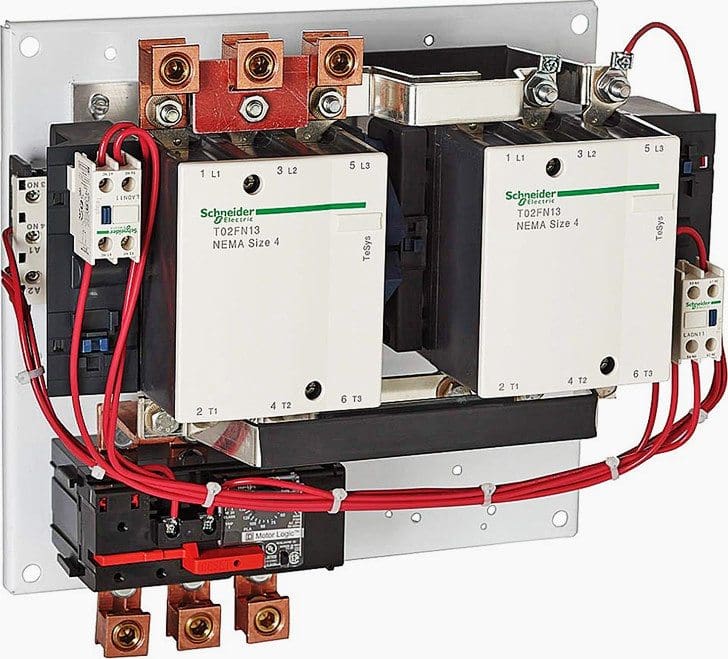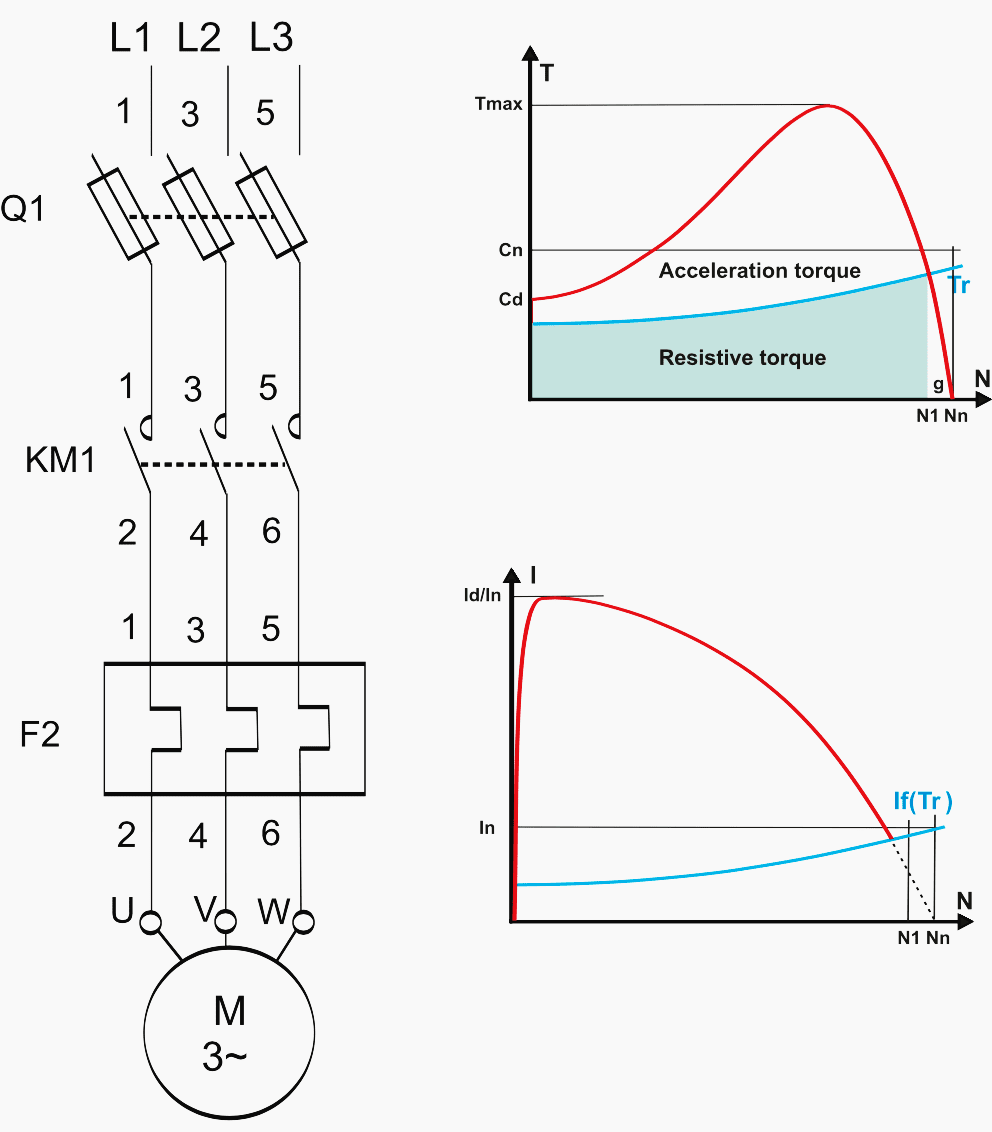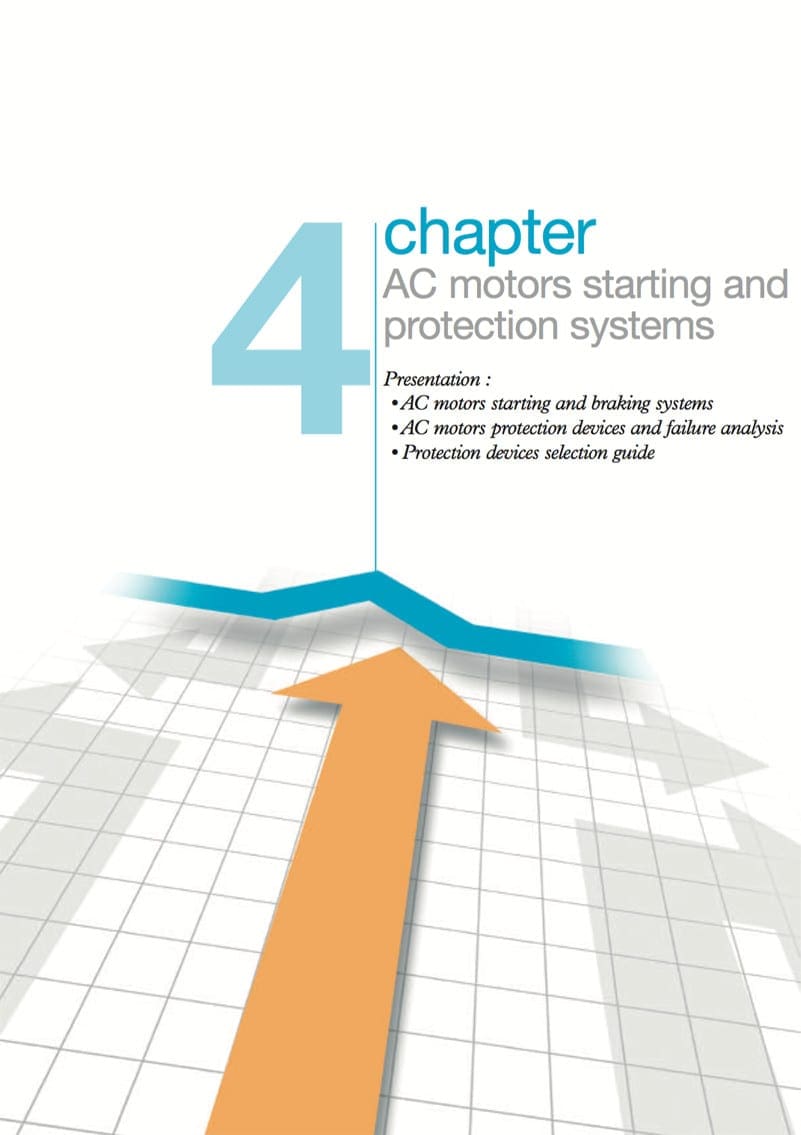Asynchronous motors
This guidance is devoted to starting and braking systems and the protection of asynchronous motors of all types. Motor protection is required to ensure the installations work properly and to protect machines and equipment’s.

Starting asynchronous motors
When a motor is switched on, there is a high inrush current from the mains which may, especially if the power line section is inadequate, cause a drop in voltage likely to affect receptor operation. This drop may be severe enough to be noticeable in lighting equipment.
There are several starting systems which differ according to the motor and load specifications. The choice is governed by electrical, mechanical and economic factors. The kind of load driven is also important in the choice of starting system.
Direct on-line starting
This is the simplest mode, where the stator is directly connected to the mains supply. The motor starts with its own characteristics.

When it is switched on, the motor behaves like a transformer with its secondary, formed by the very low resistance rotor cage, in short circuit.
There is a high induced current in the rotor which results in a current peak in the mains supply:
- Current on starting = 5 to 8 rated Current.
- The average starting torque is: T on starting = 0.5 to 1.5 rated T.
In spite of its advantages (simple equipment, high starting torque, fast start, low cost), direct on-line starting is only suitable when:
- The power of the motor is low compared to that of the mains, which limits interference from inrush current,
- The machine to drive does not need to speed up gradually or has a damping device to limit the shock of starting,
- The starting torque can be high without affecting machine operation or the load that is driven.
| Title: | AC motors starting, breaking and protection systems (with failure analysis) – Schneider Electric |
| Format: | |
| Size: | 2.4 MB |
| Pages: | 32 |
| Download: | Here 🔗 (Get Premium Membership) | Video Courses | Download Updates |



Also please send me IEC Standard Torque Chard.
Dear Sir,
Good afternoon Thank you so much for emailing Info.
I am Looking for HMI Configuration and Relay Sating Support.
Kinds Regards.
Biswas.